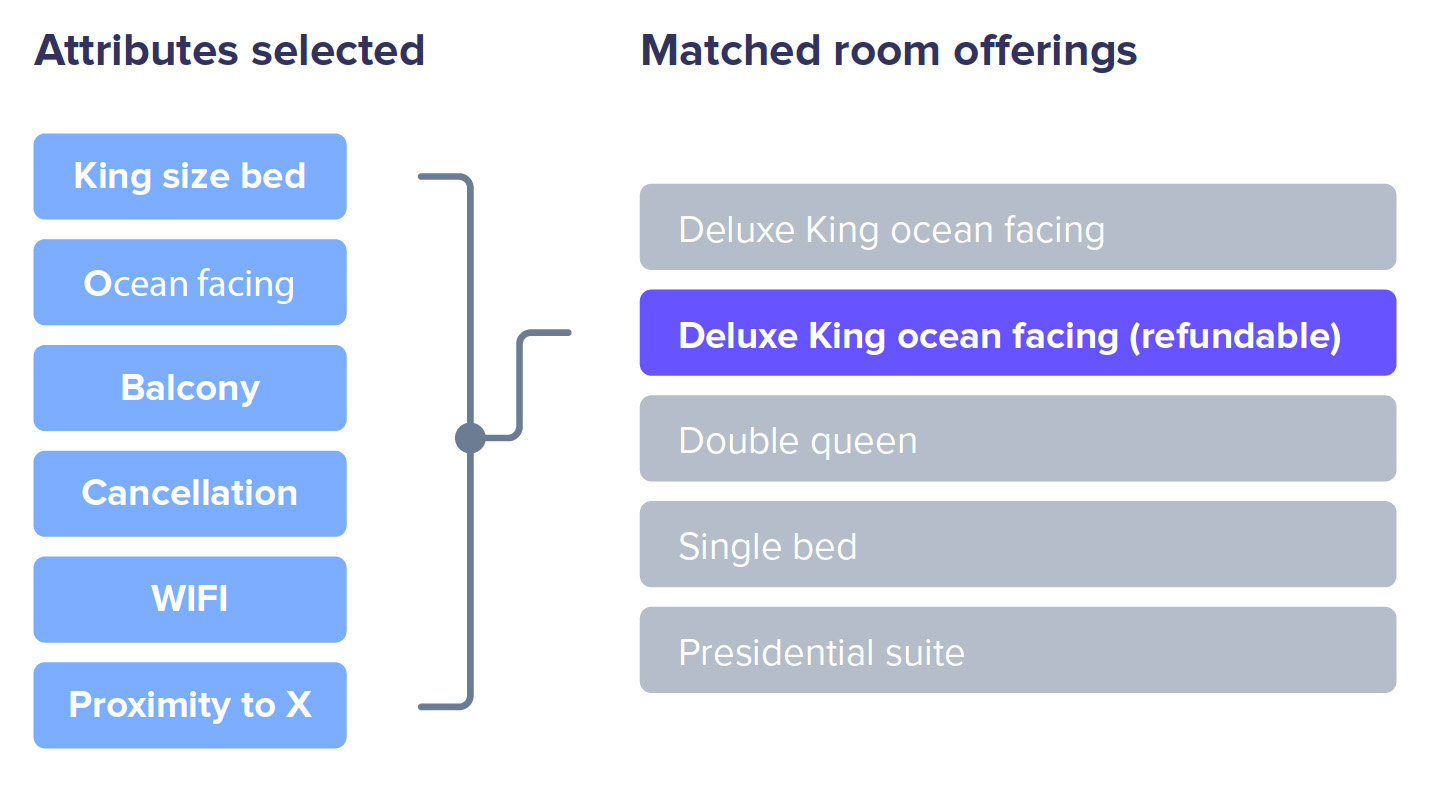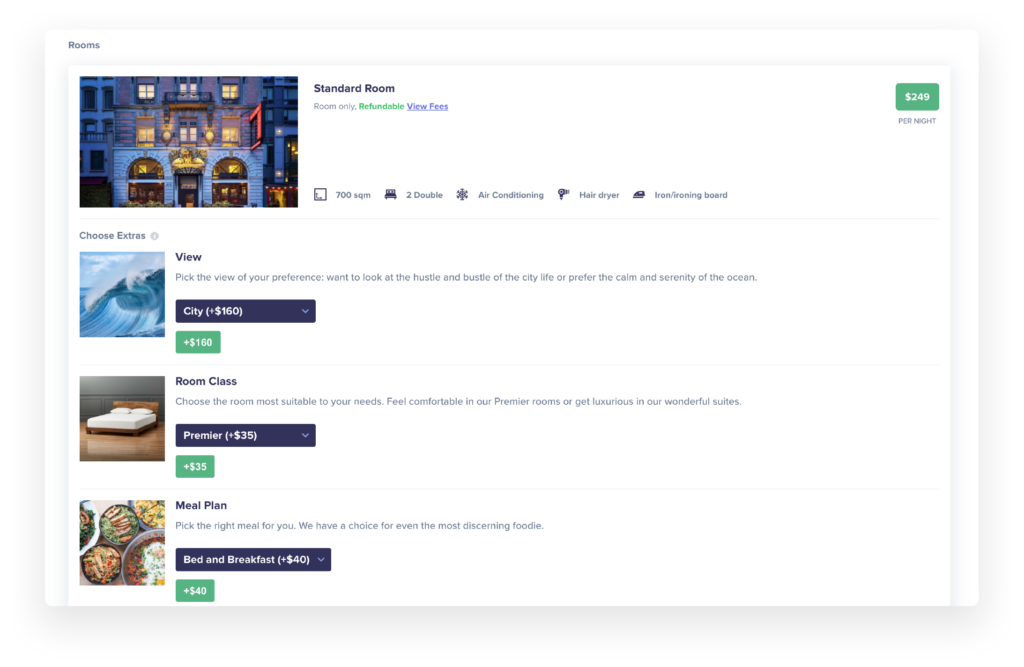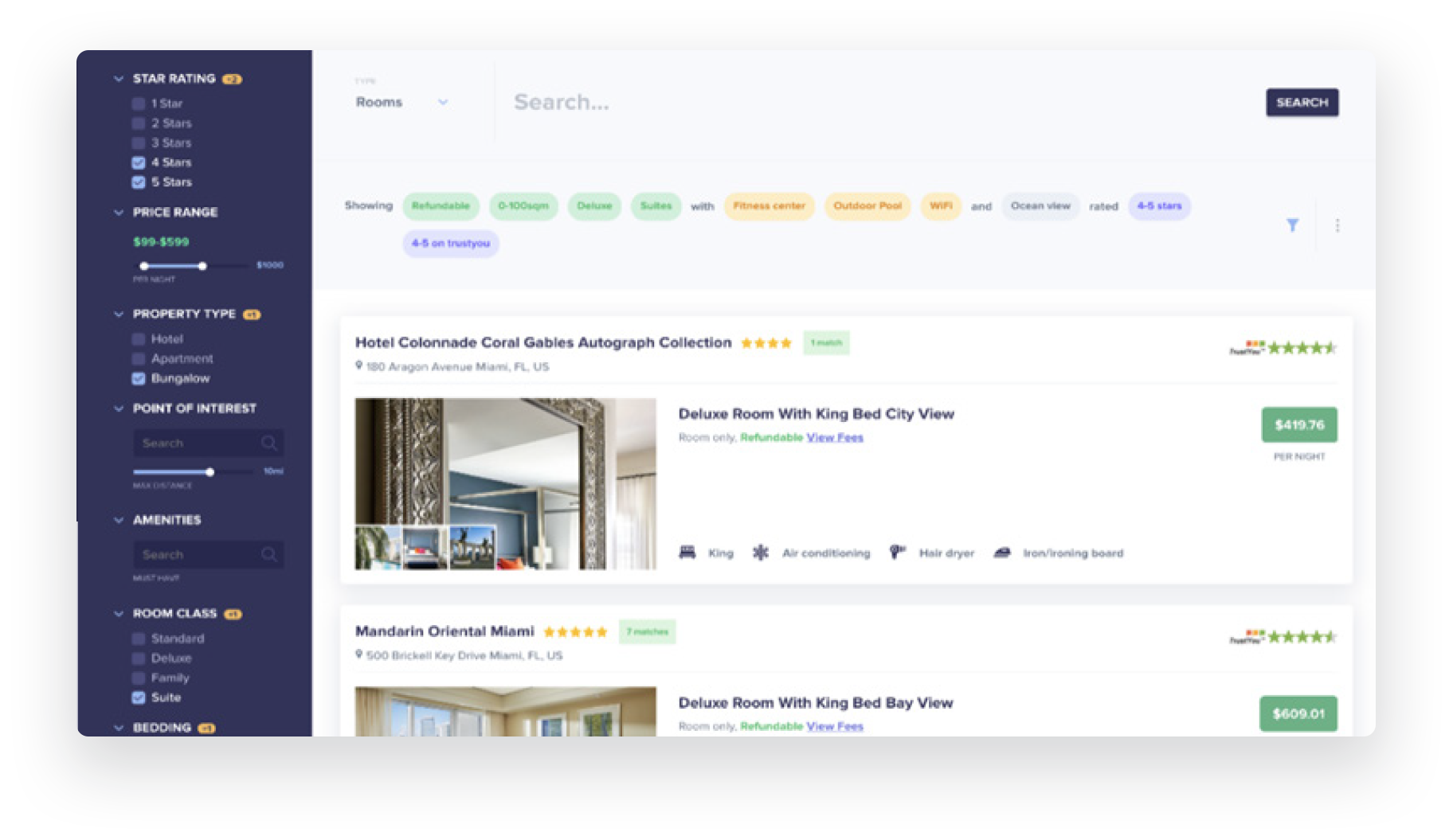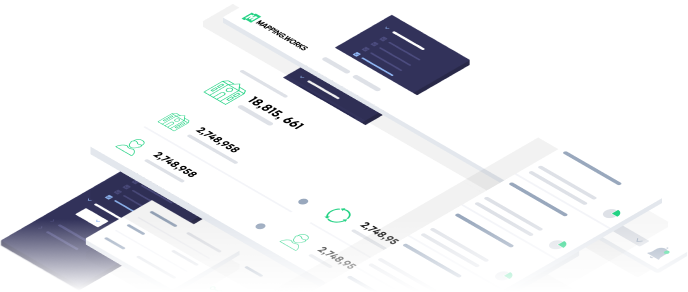The industry has been talking about attribute-based selling or ABS for hotels for quite some time now. The benefits are obvious: lower entry level and mass appeal, increased conversion rates, an entire new universe of upselling opportunities, and a superior, personalized customer experience.
But there are difficulties.
Hotel-room offerings are too complex to truly unbundle, and technological limitations make a comprehensive ABS experience seem impossible to implement at this point in time. When you look at the average OTA that works with 10 wholesalers and their booking engine, an ABS experience seems impossible.
Or is it? Not entirely.
What’s virtual merchandising?
What if as a hotel seller you wouldn’t need cooperation from a hotel or even a wholesaler to achieve a more sophisticated buyer experience? In a quest to provide OTAs and booking engines with upselling capabilities, this is what we at Gimmonix dubbed Virtual Merchandising.
Virtual merchandising is the deconstruction and reconstruction of the aggregate of your room offerings in a particular hotel to give consumers the ability to work their way up to their desired room offering, and/or expand on it after they book.
In the following example, a sophisticated business logic structure recognizes a room offering out of a set of attributes a customer picked. The user experience is personalized while the outcome still uses an existing bank of room offerings:

The idea is quite simple but requires a bit of technological prowess. Using superior, AI-driven room-mapping capabilities it is now possible to map, group and extract the attributes of millions of rooms in millions of hotels across several hotel suppliers. These groupings and pools of attributes are then used to personalize searches and provide upsell opportunities during and post-booking.
Why virtual merchandising is a conversion masterpiece
Marketers, business, and product professionals have long advocated for mapping user experiences and increasing touchpoint effectiveness along the user journey. Virtual merchandising may not supply the traditional experience of ABS as it is known in the airline industry from an operational standpoint. However, as a sales and marketing touchpoint enhancement strategy, it can very well achieve the same results.
Let’s take a look at the various touch points we can optimize along the customer journey:
Booking experience
Much like in the airline industry, you can now present a ‘basic’ room offering that a user can expand on (see the following example that shows a ‘basic’ hotel room with selectable attributes). The benefits are twofold: from a user’s perspective, you’re providing a perceived lower entry-level pricing and a personalized experience; from your perspective, you drive conversion and retention.

Post-booking upsell opportunities
Given that you’ve just sold a refundable room, you can treat the entire cancellation period as an upselling period. You can now use interactive, automated marketing emails and push notifications to promote upgrades, and change the underlying package to a more expensive one behind the scenes. This also allows saving users’ favorite attributes for future suggestions and provides high-converting upsells.
In the following example, the virtual merchandising business logic has extracted the remaining attributes possible to be upsold from the bank of available offerings and designed an automated sales offering that contains additional available meal plans and room classes.

Search experience and personalization
Superior mapping technology allows introducing a room-centric search approach; in other words, you can flip the search experience so that your end customers can pick and choose exactly what they’re looking for (at the beginning of their journey) without going through searching and refiltering properties.
Put another way, after stating their wishes, consumers get right to the end product: hotel rooms matching the desired criteria, right off the bat, nested under their respective hotels as shown in the following figure. This approach attains two important objectives: it personalizes the search experience, and eliminates as many as three extra steps to conversion.

Customer centricity in a recovering industry
Covid-19 has given the travel industry many reasons to fret. Travel will recover, this is a certainty — but the landscape will change. Companies that provide legacy user experiences will remain irrelevant if they even make it to the recovered market.
Customer centricity, the likes of which can be achieved with virtual merchandising, is a significant step towards what we at Gimmonix believe is the future of a consumer-centric approach in a rehabilitated travel industry. It is, we believe, a call for OTAs and other travel businesses to stop making their customers work so hard.
To learn about Gimmonix’s services – info@gimmonix.com








